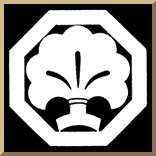Nakamura-za
The Nakamura-za (中村座; founded 1624) was one of the three main kabuki theatres of Edo (ja:江戸三座) alongside the Morita-za and Ichimura-za.[1] It was founded by Nakamura Kanzaburō 1st (ja:中村勘三郎 (初代)). The Nakamura-za relocated to the new capital Tokyo in 1868 and reopened under Nakamura Kanzaburō I's last direct descendant Nakamura Kanzaburo XIII (1828-1895) as zamoto.[2]
References
- ↑ Japanese Aesthetics and Culture: A Reader - Page 205 Nancy G. Hume - 1995 "While the Nakamura-za in Edo provides a detailed illustration of the physical design of a theater, it should be noted that no two were identical. Theaters were, moreover, periodically rebuilt, for fires frequently ravaged Edo. In the 1690s the ..."
- ↑ Kabuki Plays on Stage: Restoration and Reform, 1872-1905 - Page 3 James R. Brandon, Samuel L. Leiter - 2003 "dwindled to the point that the Nakamura-za was dark for fifty-eight days and the Ichimura-za for thirty-eight. That autumn, in a display of political awareness, the Morita-za and the Nakamura-za joined forces to stage the prophetically titled Dedication of Loyalty to the Eastern Capital (Azuma no Miyako Chushin Yurai), with "eastern capital" being ...Tokyo" "In Tokyo the three licensed theatres continued without change"
This article is issued from Wikipedia - version of the 3/2/2016. The text is available under the Creative Commons Attribution/Share Alike but additional terms may apply for the media files.
